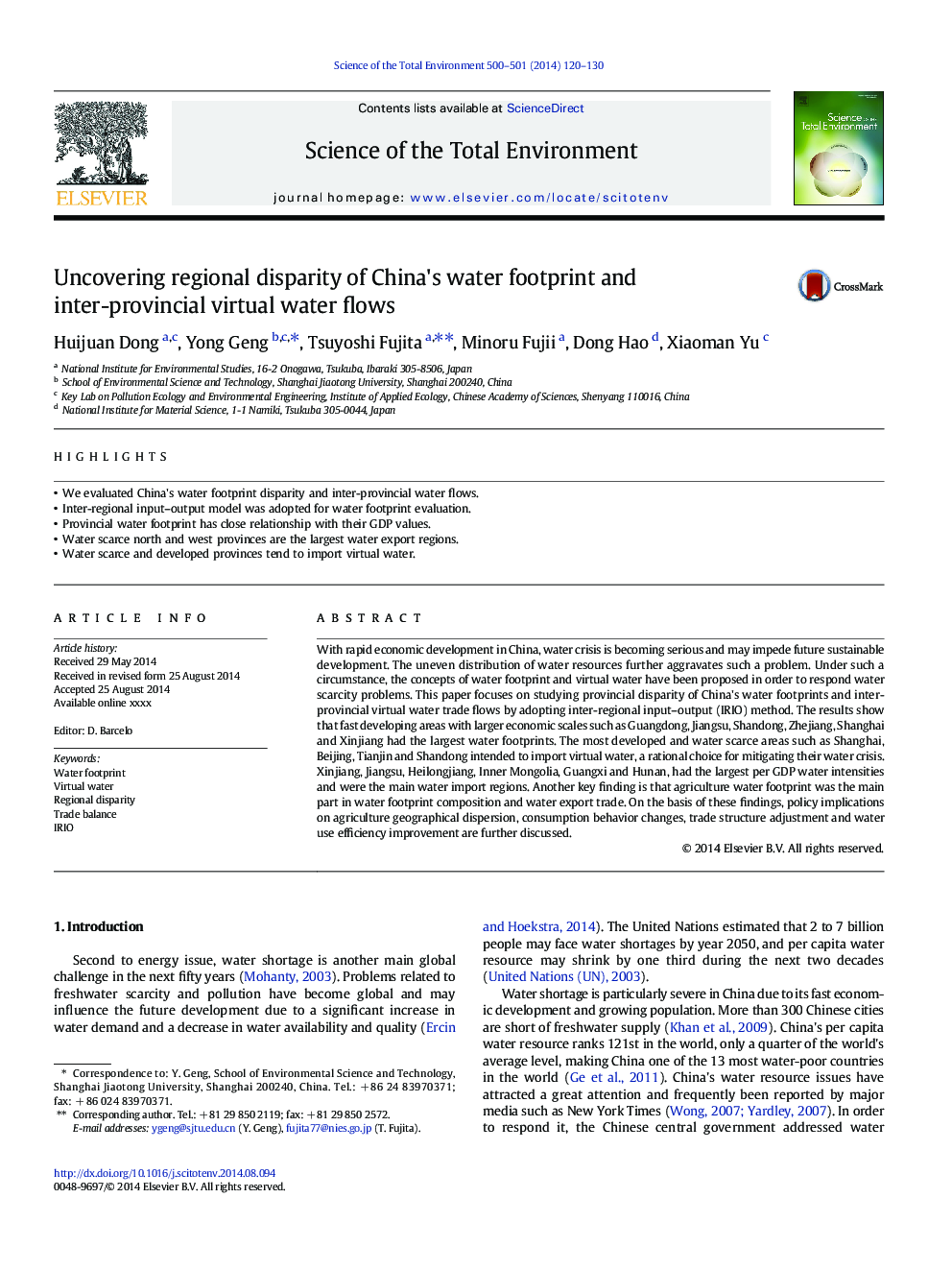| Article ID | Journal | Published Year | Pages | File Type |
|---|---|---|---|---|
| 6328320 | Science of The Total Environment | 2014 | 11 Pages |
Abstract
With rapid economic development in China, water crisis is becoming serious and may impede future sustainable development. The uneven distribution of water resources further aggravates such a problem. Under such a circumstance, the concepts of water footprint and virtual water have been proposed in order to respond water scarcity problems. This paper focuses on studying provincial disparity of China's water footprints and inter-provincial virtual water trade flows by adopting inter-regional input-output (IRIO) method. The results show that fast developing areas with larger economic scales such as Guangdong, Jiangsu, Shandong, Zhejiang, Shanghai and Xinjiang had the largest water footprints. The most developed and water scarce areas such as Shanghai, Beijing, Tianjin and Shandong intended to import virtual water, a rational choice for mitigating their water crisis. Xinjiang, Jiangsu, Heilongjiang, Inner Mongolia, Guangxi and Hunan, had the largest per GDP water intensities and were the main water import regions. Another key finding is that agriculture water footprint was the main part in water footprint composition and water export trade. On the basis of these findings, policy implications on agriculture geographical dispersion, consumption behavior changes, trade structure adjustment and water use efficiency improvement are further discussed.
Related Topics
Life Sciences
Environmental Science
Environmental Chemistry
Authors
Huijuan Dong, Yong Geng, Tsuyoshi Fujita, Minoru Fujii, Dong Hao, Xiaoman Yu,
